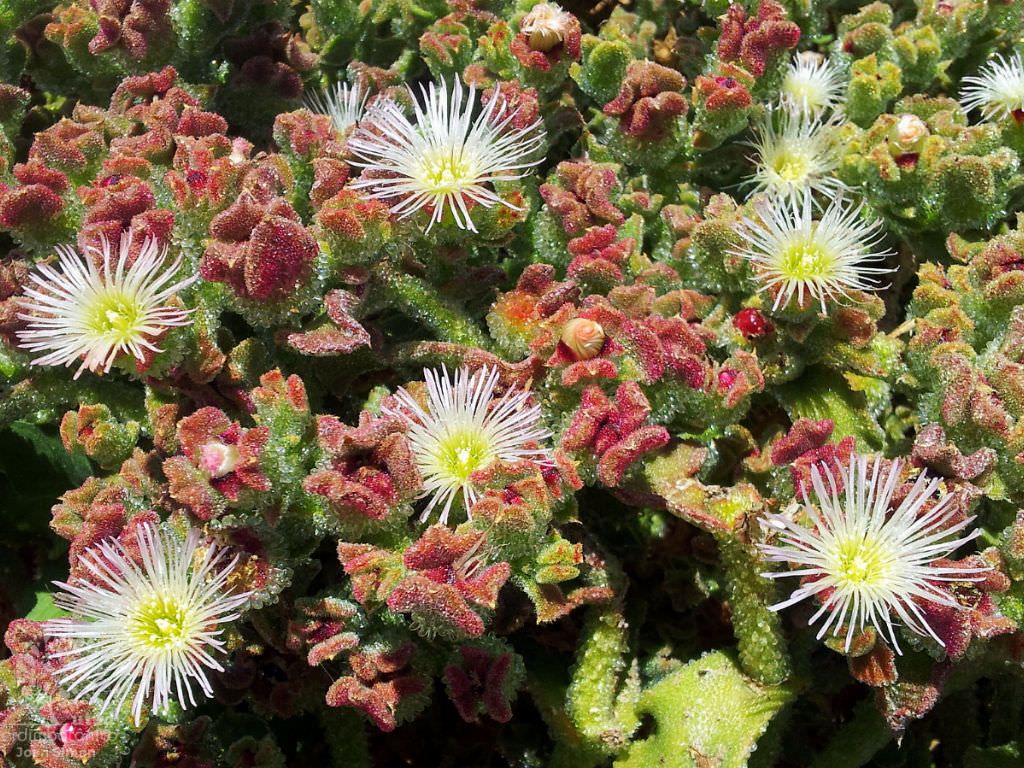
Ice plant
Delosperma cooperi
Basic Information
🌿 Family: Aizoaceae🗺️ Zone: 5-11
Other Names:
- Hottentot Fig (Carpobrotus edulis)
- Sea Fig (Carpobrotus chilensis)
- Pigface
🌡️ Ideal Temperature : 50°F – 85°F
🔥 Heat Tolerance: Up to 100°F
❄️ Cold Tolerance: Down to 20°F
🌱 Type: Perennial
Layers
- Ground cover
Functions
- Edible
- Medicinal
- Ground Cover
- Erosion Control
- Border Plant
Pests
No pests associated with this plant.
Description
Ice plant (Delosperma cooperi) is a perennial succulent characterized by its thick, fleshy leaves covered with crystalline water-storing structures that shimmer like ice crystals in sunlight, hence its name. It forms a dense, mat-like growth that effectively suppresses weeds, spreading quickly to cover bare ground. The leaves are edible and have a mildly salty taste, often used fresh in salads or as a garnish.
🌞💧 Sun and Water Requirements:
Ice Plant prefers full sun and thrives in well-drained, sandy, or rocky soils. It tolerates drought exceptionally well and requires minimal watering once established, needing only occasional irrigation during prolonged dry spells.
✂️🫘 Methods to Propagate:
Ice Plant propagates easily from stem cuttings or seeds. Cuttings root quickly in moist, sandy soil and usually establish within 2-3 weeks.
🧑🌾👩🌾 When to Harvest:
Harvest young, tender leaves continuously as needed during the growing season, typically spring through early fall. Leaves taste best when harvested young.
Purpose
- Edible: Leaves are edible and provide a crunchy, salty flavor used in salads and garnishes.
- Ground Cover: Forms dense mats to suppress weeds, reducing the need for weed control.
- Erosion Control: Its thick, mat-forming growth helps stabilize soil on slopes, preventing erosion and reducing soil loss.
- Wildlife Attractor: Its vibrant flowers attract pollinators like bees and butterflies, increasing local biodiversity.
- Border Plant: Ideal for edging paths and garden borders due to its compact growth habit.